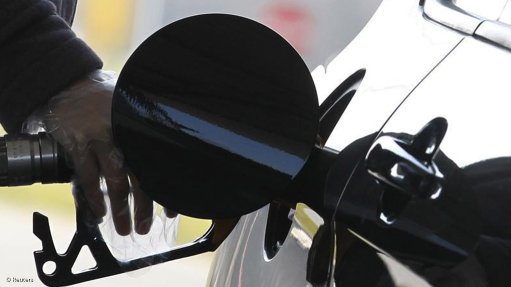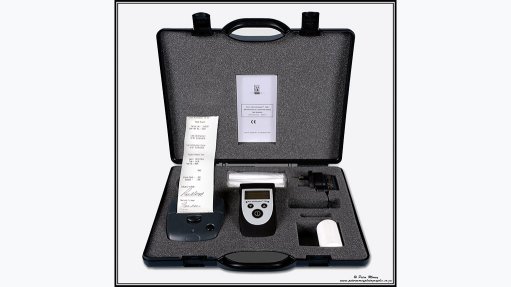Shopping by cellphone gaining momentum, but not yet a mass retail experience
The number of South African con- sumers using mobile technology to shop through their cellphones is increasing, eliminating the need to carry cash and banking cards.
“This technology is already active in South Africa, but the use versus the mechanism are two completely different things. The mechanisms are in place in several ways, but people’s willingness to use it is still limited,” says World Wide Worx MD Arthur Goldstuck.
The technology has the potential to become popular, but it will take some time to become well integrated into the market.
“There are several factors that have to be considered that can be attributed to the slow pick-up of the technology, including the fact that consumers must have devices that are near-field-communication- (NFC-) enabled, which facilitates the making of payments through cellphone use,” adds BMI-Tech-knowledge technology analyst Ryan Smit.
The technology can be used in various ways. Goldstuck explains that consumers have been using their cellphones to make payments for some time. However, the technology has not yet penetrated the shopping malls.
“Consumers have been using unstructured supplementary service data (USSD), which entails doing transactions using a menu interface on a cellphone. USSD allows consumers to buy airtime; it can also be linked to airtime and used to pay for certain services.”
The ‘World Wide Worx mobile consumer in South Africa 2012’ report shows that 56% of subscribers buy their airtime using USSD. This is a dramatic increase from the 40% recorded at the end of 2010. Therefore, there is potential for the market to absorb cellphone shopping.
The report also notes that mobile banking is contributing to consumers being encouraged to do transactions through cellphones.
“We have seen the launch of Absa CashSend, which enables customers to send money from their bank account. The recipient can then withdraw funds using a reference code at an ATM. wiGroup now allows banks to enable this transaction in a retail store,” explains WiGroup CEO Bevan Ducasse.
Although banks have introduced banking applications, which enable consumers to transfer money and buy airtime, consumers are taking note of other available oppor- tunities that cellphones provide with regard to mobile shopping.
Market Opportunity
“The cellphone shopping market is still very small, which can be attributed to not many devices being NFC-enabled.
“Further, not many merchants have the necessary scanners required to perform these transactions, such as Mastercard’s PayPass, nor are payment services such as Google Wallet available in South Africa as yet,” explains Smit.
The 2012 African Mobile Factbook states that commerce in Africa is steadily becoming dependent on mobile technology. Some analysts are even predicting that Africa will become the world’s first post-PC region of the world, with countries such as Botswana, Gabon and South Africa having a mobile penetration of more than 100%.
As mobile cellphones are such pervasive, sophisticated and personal devices, new and exciting opportunities are inevitable.
Goldstuck agrees that the technology has potential to become a force in the market, but cautions that it is still early days and that the technology is yet to be standardised.
No Single Standard
“There is no standard system or applications in place. Every bank has its own application that is integrated with retailers, but there is a need for one application that supports all transactions. It might take some time to reach a point where we have seamless interactions and transactions between customers and retailers,” says Goldstuck.
This particular application will encourage consumers to use the technology and, unless a successful application is developed, it will be difficult to punt the technology independent of an application.
“The technology has to have an attractive value proposition to encourage consumers to use it instead of money or credit cards,” notes Smit.
Ducasse notes that there are hundreds of applications and transaction offerings being developed every day, but many of these do not materialise because the technology cannot access retail stores using a single application.
“Retailers require training, time, investment and complex integration with their existing point-of-sale systems and, even then, they are restricted because they cannot add other transactional services from different companies to that system once implemented.”
This is why wiGroup developed wiCode and wiTag to create a standard application, which allows retailers to integrate and then seamlessly enable any mobile transaction offering. Ducasse notes that there was an increase in shoppers using the mobile technology during the last holiday season.
Cellular Discounts
“Shoprite and Checkers enabled their customers to get instant shopping discounts on their cellphones with EeziCoupons, an application that has effectively replaced outdated paper coupons. Consumers simply need to view coupons on their cellphones, buy those products and enter the code at the till pin pads, giving them instant access to relevant discounts,” says Ducasse.
Through this platform, wiGroup enables all relevant players, banks, coupon providers, as well as application and payment offerings, to access retail stores.
“We have created applications known as wiCode and wiTag, which have allowed retailers the benefits of integrating into only one platform and training their staff to operate only one system.
“Once implemented, the wiCode and wiTag platform will pair any offering – whether a coupon, a reward, a payment, a cash deposit or withdrawal – activated from any mobile device to their system in seconds,” explains Ducasse.
Challenges Remain
Although the industry wants to gain momentum in rolling out the mobile technology, there are still some challenges that could hinder the progress of this new technology.
“Consumer mentality may be a difficult hurdle, as people take a long time to become comfortable with these kinds of mechanisms. Most cellphone users can buy and transfer simple things, such as airtime, and make money transfers on their cellphones. This has made it the norm to use a cellphone for simple purchases.
“However, the moment you introduce a third-party purchase or a delivery service that does not exist on the phone, there will be some resistance.
“Lack of knowledge about the technology also plays a role and can then translate into a lack of trust in the technology. Acceptance of this new technology ultimately relies on consumers having the correct information that will allow them to trust it,” explains Goldstuck.
Further, most people do not have NFC-enabled smartphones. One way of resolving this would be for cellphone companies to increase the available stock of smartphones and prices would need to come down. Alternatively, cellphone companies could install NFC to lower specification devices.
Another challenge is to get merchants to use the technology, such as pay-pass scanners, in the shops and that might prompt customers to use the technology.
The difficulty is not only to convince consumers to use the technology but also to convince merchants that customers are interested in using this technology, before spending large amounts of money on infrastructure for the devices to allow consumers to pay by mobile technology.
Security is also an aspect that needs to be considered, as consumers need reassurance that security cannot be breached while using this technology.
Smit notes that the close-range technology that is used makes it less likely that the signal between the cellphone and the electronic pay point involved in the transaction will be interrupted or intercepted; therefore, the information cannot be intercepted by an outside source when transmission takes place between the two devices.
“Security is more of an issue because this is an unknown method of payment. Consumers will be more risk averse when using it, but so far I am unaware of many instances of the system being breeched,” he adds.
Passwords and codes can be used to eliminate the threat of fraud, says Goldstuck.
“Normally, a person will type in a pin before a transaction is completed and, should a person’s phone be stolen, this kind of information would have to be known before gaining access to personal accounts. So, from that point of view, it can is safe and can be controlled, much like an ATM card.”
The Benefits
South Africa is not the only African country that is seizing the opportunities to benefit from the various transaction applications available.
Kenya has one of the most successful mobile money-transfer stories in the world, as mobile transactions have become firmly entrenched in Kenyan culture. By 2010, 50% of Kenya’s population were making mobile payments.
“M-Pesa is used in Kenya and this mobile phone-based money transfer has enjoyed huge success in Kenya and Tanzania and it has proven to be the most popular mobile payment system in the developing world,” says Ducasse.
He also notes that retail will be the big driver and enabler of mobile transactions in South Africa, with many large organisations rolling out various transactions and services across the board.
Ducasse says the reasons for mobile transacting fast becoming popular in South Africa are the consumer saving drive, access to a wider customer base, closing the marketing loop and a wider transaction platform.
“These various reasons benefit the customer and the retail shops, which, in essence, is a win-win situation for both sides,” he concludes.
Article Enquiry
Email Article
Save Article
Feedback
To advertise email advertising@creamermedia.co.za or click here
Comments
Press Office
Announcements
What's On
Subscribe to improve your user experience...
Option 1 (equivalent of R125 a month):
Receive a weekly copy of Creamer Media's Engineering News & Mining Weekly magazine
(print copy for those in South Africa and e-magazine for those outside of South Africa)
Receive daily email newsletters
Access to full search results
Access archive of magazine back copies
Access to Projects in Progress
Access to ONE Research Report of your choice in PDF format
Option 2 (equivalent of R375 a month):
All benefits from Option 1
PLUS
Access to Creamer Media's Research Channel Africa for ALL Research Reports, in PDF format, on various industrial and mining sectors
including Electricity; Water; Energy Transition; Hydrogen; Roads, Rail and Ports; Coal; Gold; Platinum; Battery Metals; etc.
Already a subscriber?
Forgotten your password?
Receive weekly copy of Creamer Media's Engineering News & Mining Weekly magazine (print copy for those in South Africa and e-magazine for those outside of South Africa)
➕
Recieve daily email newsletters
➕
Access to full search results
➕
Access archive of magazine back copies
➕
Access to Projects in Progress
➕
Access to ONE Research Report of your choice in PDF format
RESEARCH CHANNEL AFRICA
R4500 (equivalent of R375 a month)
SUBSCRIBEAll benefits from Option 1
➕
Access to Creamer Media's Research Channel Africa for ALL Research Reports on various industrial and mining sectors, in PDF format, including on:
Electricity
➕
Water
➕
Energy Transition
➕
Hydrogen
➕
Roads, Rail and Ports
➕
Coal
➕
Gold
➕
Platinum
➕
Battery Metals
➕
etc.
Receive all benefits from Option 1 or Option 2 delivered to numerous people at your company
➕
Multiple User names and Passwords for simultaneous log-ins
➕
Intranet integration access to all in your organisation
















